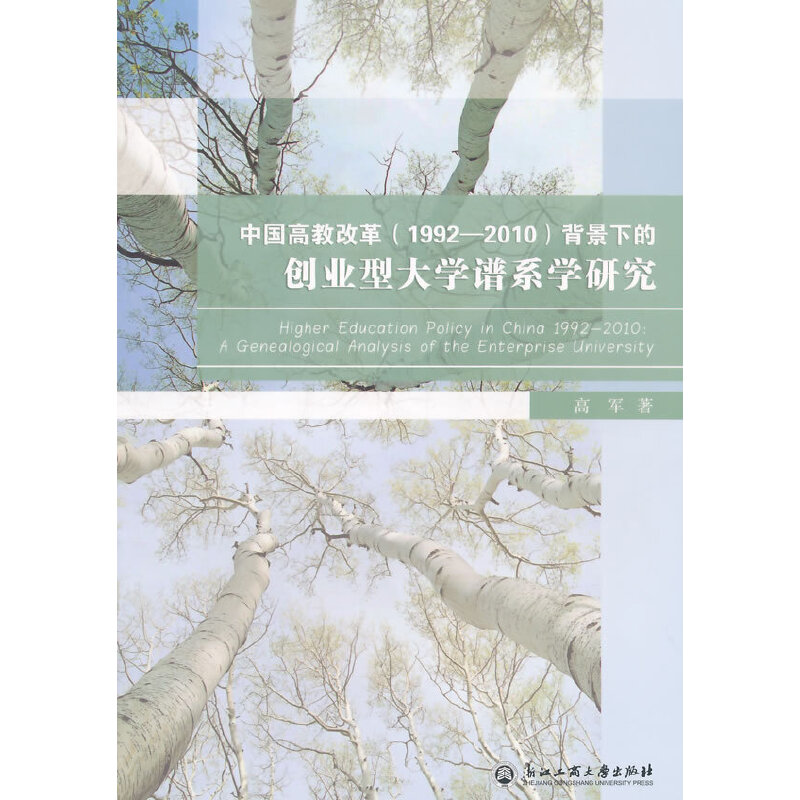城市管理专业英语教程--生态城市理论与实践
作者: 张朝鹏
出版时间:2014年5月
出版社:浙江大学
- 浙江大学
- 9787308131834
- 169847
- 2014年5月
- H31
张朝鹏主编的这本《城市管理专业英语教程--生态城市理论与实践》可用作城市管理专业本科教学编写的专业英语教材,也可供其他公共管理类专业师生参考。《城市管理专业英语教程--生态城市理论与实践》旨在为城市管理专业英语的教学起到一个引导入门的作用,因此在内容选择上并未求全,而是侧重于经济学、社会学、生态学的理论以及水资源、空气质量、交通、城市化等几方面知识的介绍。在教授和学习的过程中,还需要城市管理专业的师生根据自身情况自主扩展其他内容。
Chapter 1 Theoretical Foundations of Ecological City
1.1 Ecological Economics
1.1.1 Market Failures
1.1.2 Two Theorems and the Role of the Government
1.2 Ecological Sociology
1.2.1 Several Perspectives
1.2.2 Amos Hawley's Theory of Human Ecology
1.3 Urban Planning Theory
1.3.1 Eationalism of Planning Theory
1.3.2 Incrementalism of Planning Theory
1.3.3 Utopianism of Planning Theory
1.4 Ecology
1.4.1 Charles Darwin: Natural Selection
1.4.2 Human Nutritional Requirements
1.4.3 Resource Demand: A Historical-Ecological Perspective
Questions
Chapter 2 New Concepts of Ecological City
2.1 Richard Register's "Ecocity"
2.1.1 The Present Situation--City, Nature, and the Chief Agent of Their Demise
2.1.2 Principles of Eeocity-Building
2.2 Urban Ecological Safety Management
2.3 Green GDP
2.4 Sustainable Development Theory
2.4.1 Definition
2.4.2 Domains
2.4.3 Criticisms
Questions
Chapter 3 Water Issues
3.1 General Discussion
3.1.1 Is It Safe to Drink the Water?
3.1.2 Kinds and Sources of Water Pollution
3.1.3 Municipal Water Pollution
3.1.4 Water-Use Planning Issues
3.1.5 The California Water Plan
3.2 Essays on Water Management
3.2.1 Water Demand Management in Yemen and Jordan: Addressing Power and Interests
3.2.2 Sustainable Water Management in India Considering Likely Climate and Other Changes
Questions
Chapter 4 Air Issues
4.1 Category of Air Pollutants
4.1.1 Carbon Monoxide
4.1.2 Volatile Organic Compounds
4.1.3 Particulate Matter
4.1.4 Sulfur Dioxide
4.1.5 Nitrogen Dioxide
4.1.6 Lead
4.1.7 Ground-Level Ozone and Photochemical Smog
4.1.8 Hazardous Air Pollutants
4.2 Essays on Air Pollution
4.2.1 Air Emissions Control for Composting Operations
4.2.2 Economic Analysis of Air Pollution
Questions
Chapter 5 Traffic Issues
5.1 Traffic Congestion
5.1.1 Causes
5.1.2 Classification
5.1.3 Negative Impacts
5.1.4 Countermeasures
5.1.5 By Country
5.2 Rethinking Traffic Congestion
5.3 America's Traffic Congestion Problem: Toward a Framework for Nationwide Reform
5.3.1 Problems
5.3.2 A Proposal for Congestion Pricing
5.3.3 Effects, Benefits, and Costs of Reform
5.3.4 Distributional Impacts and Methods of Redress
5.3.5 Questions and Concerns
Questions
Chapter 6 Urbanisation
6.1 Introduction
6.1.1 Movement
6.1.2 Causes
6.1.3 Economic Effects
6.1.4 Environmental Effects
6.1.5 Changing Forms
6.2 Urban Sprawl
6.2.1 Characteristics
6.2.2 Development Characteristics of Sprawl
6.2.3 Examples
6.2.4 Smart Growth and the Compact City
6.2.5 Transit-, Bicycling- and Pedestrian-Oriented Developments
6.2.6 Criticisms and Responses
6.3 Urbanisation in China: Policy Issues and Options (Executive Summary)
6.3.1 Why Are Cities So Critical to Successful Modernisation?
6.3.2 Distinctive Features of China's Urbanisation
6.3.3 Policy Options for Urbanisation in the Next Decade
Questions
Chapter 7 Harmonious City
7.1 Public Participation
7.1.1 Introduction
7.1.2 Principles of Public Participation
7.2 Community
7.2.1 Perspectives from Various Disciplines
7.2.2 Interdisciplinary Perspectives (Socialisation)
7.2.3 Community Development
7.2.4 Types of Community
7.2.5 Special Nature of Human Community
7.3 Community and Society--Cases and Views from the Community Service Society o{ New York (CSS)
7.3.1 A Victory on Paid Sick Days
7.3.2 Curbing the High Cost o{ Health Insurance
7.3.3 The Road to a Win for New York City Youth
7.3.4 Removing Barriers to Reentry
7.3.5 City Invests in Second Chances for Youth
7.3.6 Public Housing Residents Face Private Redevelopmen




